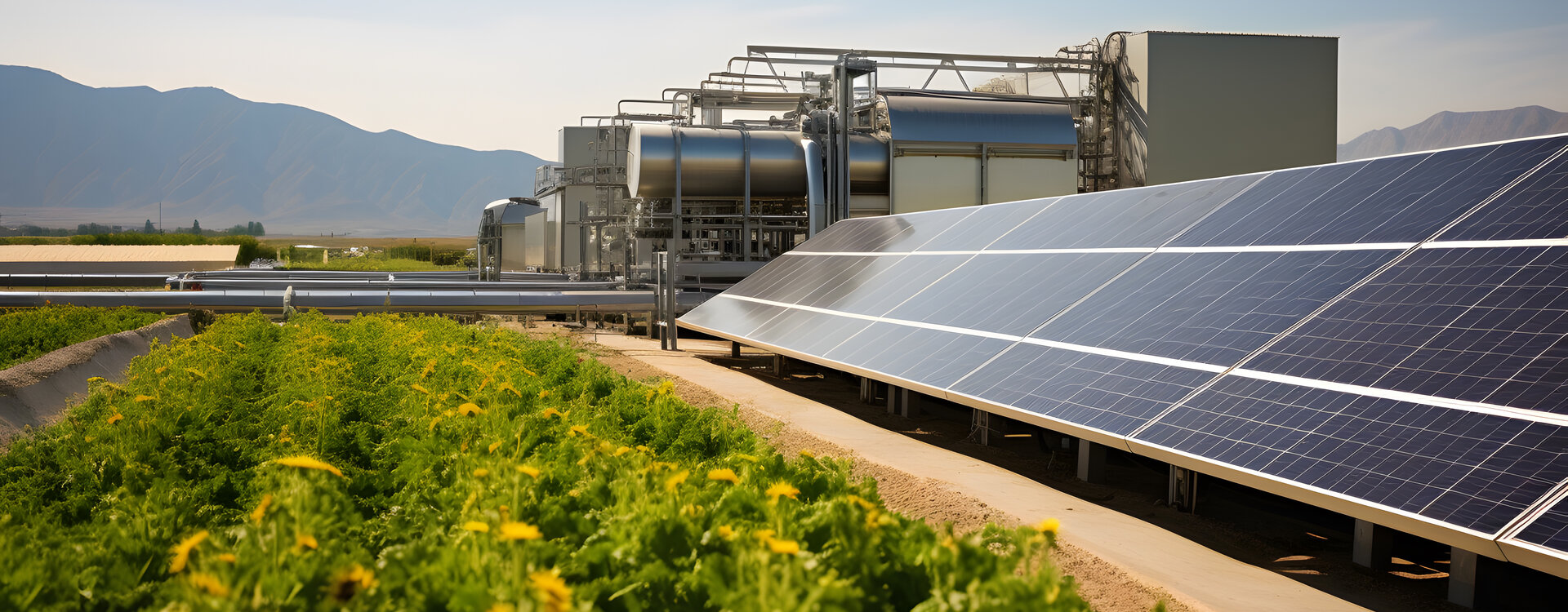
In simple terms, zero net energy (ZNE) is the concept of designing or retrofitting a new or existing building or campus with renewable generating resources so that they produce as much energy as they consume.
Human-driven climate change poses significant challenges and impacts to our quality of life and safety, and also affects how we consume and generate energy.
To mitigate and contain the effects of climate change while still providing enough energy for human and economic growth, governments and industries are crafting policies and setting targets to reduce fossil-fuel carbon emissions and increase cleaner sustainable energy sources. Renewable energy resource technologies such as solar photovoltaic (PV) and wind power are being rapidly implemented to meet these decarbonization goals.
Across the United States, local utility programs are incentivizing the installation of efficient equipment such as LED lights, HVAC systems, control systems, and other energy conservation measures to save energy and reduce waste. Additionally, clean renewable generation, end-use energy efficiency, transportation electrification, and other technologies, such as geothermal, biomass, and hydroelectric generation, are all part of a multi-faceted strategy to reduce greenhouse gas emissions.
Today, building codes have minimum energy standards requiring new construction to have a certain amount of onsite renewable energy generation. For existing buildings, some owners have decided to go all-in on onsite renewable energy generation installing the maximum capacity to offset all the electricity they consume.
Looking before you leap – factors to consider before ZNE implementation
Tax credits, grants, and other incentives from the U.S. government are driving the installation of renewable energy resources such as onsite solar PV. Cash-strapped owners are also using power-purchase agreements (PPA) to install and operate renewable generation at their site. Although these are viable methods to obtain renewable generation onsite, there are pitfalls.
A common pitfall is directly installing as much renewable energy possible to completely offset the site's electric usage without first addressing infrastructure needs. For example, even though there might be abundant "renewable" energy generation onsite, the existing infrastructure may still be very old and inefficient. This could include high pressure sodium exterior lighting or T-12 fluorescent interior fixtures or end-of-useful life HVAC systems that provide diminished comfort while drawing the same power as the day they were installed.
Once the renewable generation is installed and operating, it is infeasible to scale back on the production of an oversized system. The possible outcome of this pitfall is to either live with the existing old infrastructure or upgrade to a like-for-like inefficient equipment to avoid exceeding zero net energy or providing uncompensated excess energy to the grid. Any response option above will have negative environmental and economic outcomes for the site.
Another common pitfall is trying to achieve zero net energy solely through PPAs. Once a site is locked into a long-term take-or-pay contract, there may be little room for adjustments. A worst-case, but all-to-common scenario can occur where onsite generation exceeds consumption, but owners are still contractually obligated to pay for all the power generated while also facing fixed and demand charges from the utility.
The economic drawback of this pitfall can be further exacerbated by changes to net energy metering (NEM) rules that have greatly reduced the credit for excess electricity from the utility. For example, new renewables generation in California will fall under the net billing tariff (NBT), the third revision to NEM rules, where excess generation will be credited only a fraction of previous NEM arrangement.
The prudent approach to ZNE
In this new complex energy environment, it will be prudent to plan before going full steam towards ZNE. Clients should first take steps to understand their energy, infrastructure, utility tariffs, and costs before blindly embarking on the renewable journey.
Old infrastructure needs to be addressed with energy efficiency to reduce the baseload of the site. Then, a right-sized renewable energy system should be considered. A good place to start is by addressing low-hanging energy efficiency retrofit and retro-commissioning measures such as LED lighting, efficient control strategies, and water fixtures. Next, look for deeper energy retrofits such as high-efficient central utility plant and load shifting measures. The correct order will optimize energy atthe site use and will be more economically beneficial.
First understand the specific facility's energy situation at its baseline interval load profile through graphs, charts, and heat maps. Then, remap the revised incremental site load profiles from each potential energy conservation or generation measure. This approach will highlight the peaks and valleys throughout the day, weeks, and months, identifying behavior and seasonality electric demand variations. Solutions can be accurately crafted to address structural inefficiencies as well as behavioral inefficiencies. For example, occupancy-based control can turn off or modulate equipment during unoccupied hours and demand management measures will curtail electric demand during peak hours.
Once the final energy and demands measures are identified, a renewable energy strategy can proceed. A full ZNE strategy can be considered, but only after looking at various iterations of renewable sources and sizes to arrive at an optimized solution that balances generation goals and economics.
Marketing Communications Manager
As the Marketing Communications Manager for Southland Industries, Kathryn Fox is responsible for strategically planning and managing internal and external campaigns. Ensuring brand consistency across all platforms, Kathryn empowers the company through editorial expertise and written communications.



